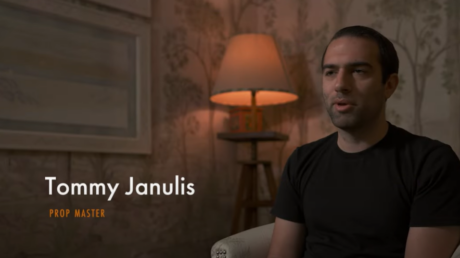Product placement successfully integrates brands into the thick of pop culture—and has done so for decades. In 1933, Coca-Cola made a cultural splash after placing its signature soda in the iconic film King Kong. Fast forward 90 years later, the powerhouse brand is still investing heavily in product placement. In 2022, Coca-Cola scored the highest earned media value from product placement at $1.83 million with its integrations in Netflix’s hit show, Stranger Things then compared to all other brands featured in season four of the hit series.
Leading brands go big on product placement because it works. By authentically integrating brands into content, product placement lets brands get closer to their target audience and become culturally relevant.
Explore how product placement can spotlight your brand by building brand salience amongst target audiences creating room for your brand to be a part of the cultural conversations amongst fans.

Reach Your Audiences, Everywhere
With product placement, you can reach your audience in the places they already love; whether that’s their favorite TV show, the hottest new music video, award-winning film, and more. These integrations weave your products seamlessly into content, which in turn, drives stronger awareness and sales intent. Unlike other advertising forms with a limited shelf life, many product placements last forever. Forty years after E.T.’s 1982 release, movie-lovers still talk about the beloved alien munching on Reese’s Pieces.
More recently, people can’t stop talking about HBO Max’s latest season of White Lotus, which garnered 5.5 million in only 30 days. After showing characters sipping Aperol Spritz cocktails, the drinks’ sales skyrocketed by 50%. With this booming success, news and media outlets have referred to the show’s integrations as “The White Lotus Effect.”
The most successful integrations ensure content opportunities align with your brand goals and a production partner’s creative vision. Partnering with product placement industry experts can help your brand navigate these waters and source the most strategic opportunities, so your brand can become a part of entertainment history.

Making Brand Safety a Top Priority
It’s one thing to be relevant and quite another to miss badly trying, without the right council. Always consider brand safety when using a product placement strategy product placements. This speaks to the importance of tapping experienced product placement agencies. Working with a well-connected agency gives brands access to the best productions and opportunities for product placement, and the industry know-how to more accurately predict which programs will be most successful.
Pepsi discovered this in 2017 with its “Live for Now” campaign with Kendall Jenner. The campaign showed Jenner sharing a Pepsi with a police officer at a staged protest. While Pepsi hoped to resonate with millennials, the campaign did quite the opposite. Many called the ad an “insensitive” and “tone deaf” attempt to co-opt the Black Lives Matter protests. Needless to say, this particular campaign failed both the authenticity and brand safety test.
Being Authentically Relevant
Successful product placement walks the fine line between showcasing a brand and folding it seamlessly and authentically into the storyline. Core Hydration is a great example of a brand that is making a huge cultural splash with successful product placements.
The brand integrated its distinctive bottle in streaming programming including He’s All That, Riverdale, and How I Met Your Father with key characters hydrating with the ultra-purified water. Through the integration’s subtle yet relevant nature, viewers may be more prone to purchasing the water when cruising the aisles of their favorite grocery store.
Frito-Lay sought to maintain relevance with younger audiences, so they put their biggest products, such as Cheetos, Lays and Doritos, into popular music videos and popular content including content that reached Netflix’s Top 10 List. The result? They successfully engaged diverse audiences and over-delivered on their campaign KPIs, including delivering 20% over contract projections.

Improve Bottom-Line Results
In addition to product placement weaving your brand into the cultural conversation, its other benefits include improving bottom-line sales results:
Brands can see whether product placement effectively reached their goals including:
- Sales lift. Using attribution reports, you can see if your target audience took a certain behavior after seeing your integration.
- Improved recall rates. Recall rates measure how many people, when asked, would remember seeing an ad within a certain period of time. Many brands experience improved recall rates after product placement.
- Brand lift studies. Brand lift measures how your ads shape consumer perceptions and behaviors.
- Media Mix Modeling (MMM) Integration. MMM refers to integrating data into existing media mix models to measure a product placement’s impact.
With the right content and right audience, your brand—whether it be or small—just might be the next big thing in entertainment today and endure forever.



